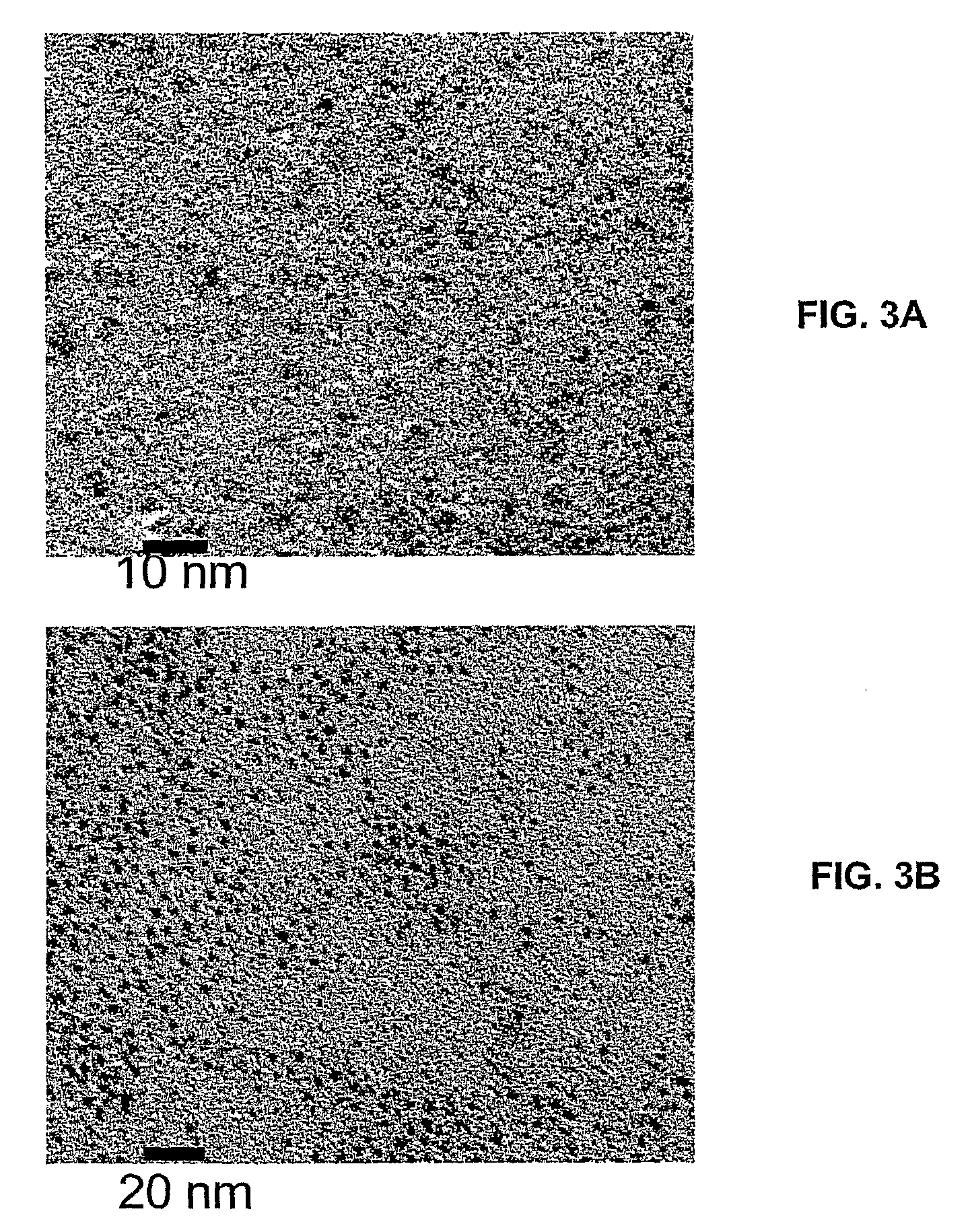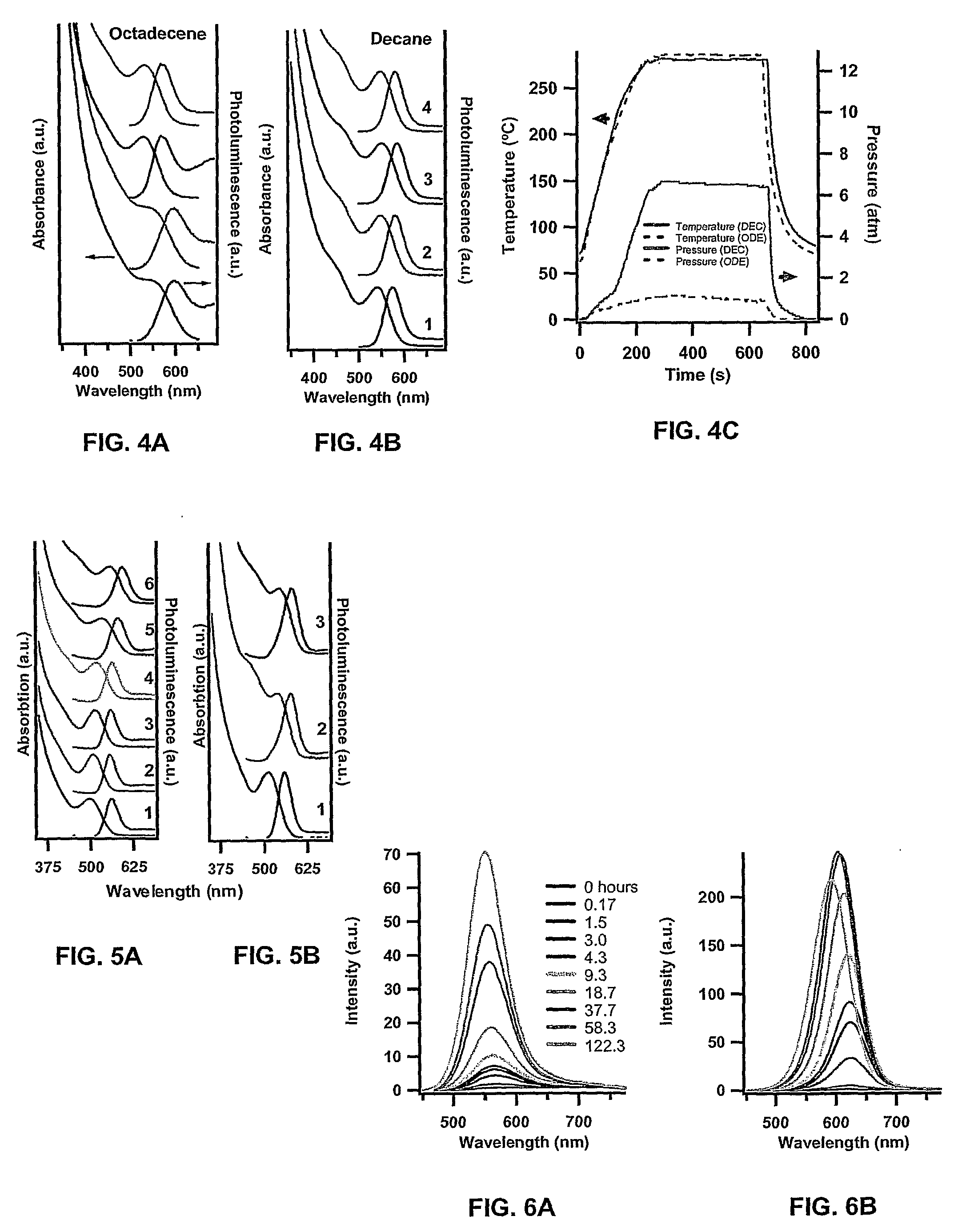Nanoparticle Synthesis and Associated Methods
a nanoparticle and nanoparticle technology, applied in the direction of organic chemistry, polycrystalline material growth, crystal growth process, etc., can solve the problems of poor nucleation process, large quantity, and limited industrialization of nanoscale materials, so as to promote more efficient annealing, increase the quantum efficiency of out-of-batch, and increase the quantity
- Summary
- Abstract
- Description
- Claims
- Application Information
AI Technical Summary
Benefits of technology
Problems solved by technology
Method used
Image
Examples
Embodiment Construction
[0038]A description of the preferred embodiments of the present invention will now be presented with reference to FIGS. 1-15B.
[0039]The method of the present invention demonstrates that microwave heating methods can address the problem of heating inhomogeneity in forming nanoparticle materials, while providing a scalable platform for industrial applications. Microwave heating has been demonstrated to enhance reaction rates, selectivity, and product yields in organic chemistry. By judicious choice of the solvents, passivating ligands, and reactants, the nanomaterial precursors can be selectively heated over the solvent or passivating ligand. Selective heating in the microwave cavity is advantageous in organic synthesis, and in general these microwave synthetic methodologies are quite adaptable to reactions that have high energies of activation and slow reaction rates. This effect confers advantages for colloidal nanostructured materials synthesis.
[0040]The present invention is direct...
PUM
 Login to View More
Login to View More Abstract
Description
Claims
Application Information
 Login to View More
Login to View More - R&D
- Intellectual Property
- Life Sciences
- Materials
- Tech Scout
- Unparalleled Data Quality
- Higher Quality Content
- 60% Fewer Hallucinations
Browse by: Latest US Patents, China's latest patents, Technical Efficacy Thesaurus, Application Domain, Technology Topic, Popular Technical Reports.
© 2025 PatSnap. All rights reserved.Legal|Privacy policy|Modern Slavery Act Transparency Statement|Sitemap|About US| Contact US: help@patsnap.com



